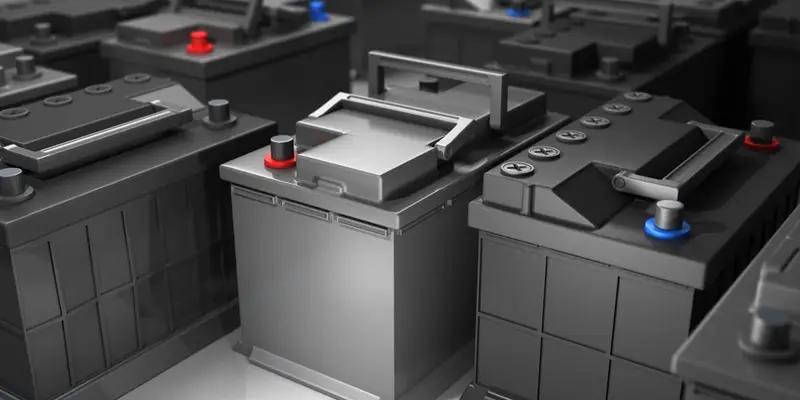Solar batteries come in various types while lead-acid batteries are a well-established choice for storing solar energy because they are cost-effective and trustworthy.
When sunlight hits the solar panels, electricity is generated.
This electricity is then used to charge the lead-acid batteries.
Inside each battery, there are lead and lead oxide electrodes submerged in a sulfuric acid solution.
Charging the battery triggers a chemical reaction that transforms the lead oxide and sulfuric acid into lead sulfate and water, while the lead reacts to form lead sulfate and release hydrogen.
The storage capacity of a lead-acid battery, or how much energy it can hold, is expressed in ampere-hours (Ah).
Many solar systems use batteries with 100 Ah capacity or more.
It’s essential to charge these batteries correctly; overcharging or undercharging can damage them and shorten their lifespan.
Pros of Lead Acid Solar Batteries
Lead-acid solar batteries, while older in technology compared to lithium-ion, offer several advantages that keep them relevant in the market for solar energy storage:
- Cost-Effective: Lead-acid batteries are generally less expensive on a per-amp-hour basis than their lithium-ion counterparts. This makes them a more budget-friendly option for those looking to store solar energy without a large initial investment.
- Proven Reliability: With a long history of use in various applications, lead-acid batteries have a well-documented track record for reliable performance in energy storage, particularly in stationary setups like solar energy systems.
- Recyclability: Lead-acid batteries are highly recyclable, with the majority of the battery components being reusable. This aspect is crucial for environmentally conscious consumers looking to reduce waste.
- Availability: They are widely available and come in various sizes and capacities, making them accessible for different solar energy storage needs.
- Simplicity and Tolerability: These batteries are tolerant to overcharging and are less sensitive to damage from deep discharges, which can be an advantage in solar applications where charge conditions can be variable.
- Established Technology: Because they have been around for so long, there’s a well-established infrastructure for the maintenance and recycling of lead-acid batteries.
Cons of Lead Acid Solar Batteries
However, despite their benefits, lead-acid batteries have some disadvantages:
- Space Requirements: They’re bulky, taking up significant space. If they emit hydrogen gas, which is a possibility, especially with older designs, a well-ventilated area or a separate shed is necessary for safety to prevent gas build-up.
- Limited Cycle Life: Their life cycle is relatively short, offering around 1,000 to 3,000 charge-discharge cycles. This means if you’re cycling the batteries daily, they could need replacing every 2 to 8 years. Frequent replacement adds to the cost over time.
- Depth of Discharge (DoD): You can typically only use up to 60% of a lead-acid battery’s total capacity if you want to avoid shortening its lifespan. This limited DoD means you need more batteries to get the same usable capacity, which can be costlier and take up more space.
- Temperature Sensitivity: Their performance is optimal at around 20°C. In hotter climates, like much of Australia, the heat can reduce both their efficiency and lifespan. If they’re not kept in a controlled environment, you can expect diminished returns on your investment.
- Rural Applications: For households located far from the power grid, lead-acid batteries may still be the go-to option because the initial cost can be lower than extending the power grid to remote locations. However, the long-term costs due to replacement and maintenance need to be considered.
Despite these drawbacks, lead-acid batteries have been used for decades and can still be viable where budget constraints are a primary concern.
However, as newer technologies such as lithium-ion become more affordable and widespread, the shift is toward more efficient, longer-lasting, and space-efficient battery storage solutions.








